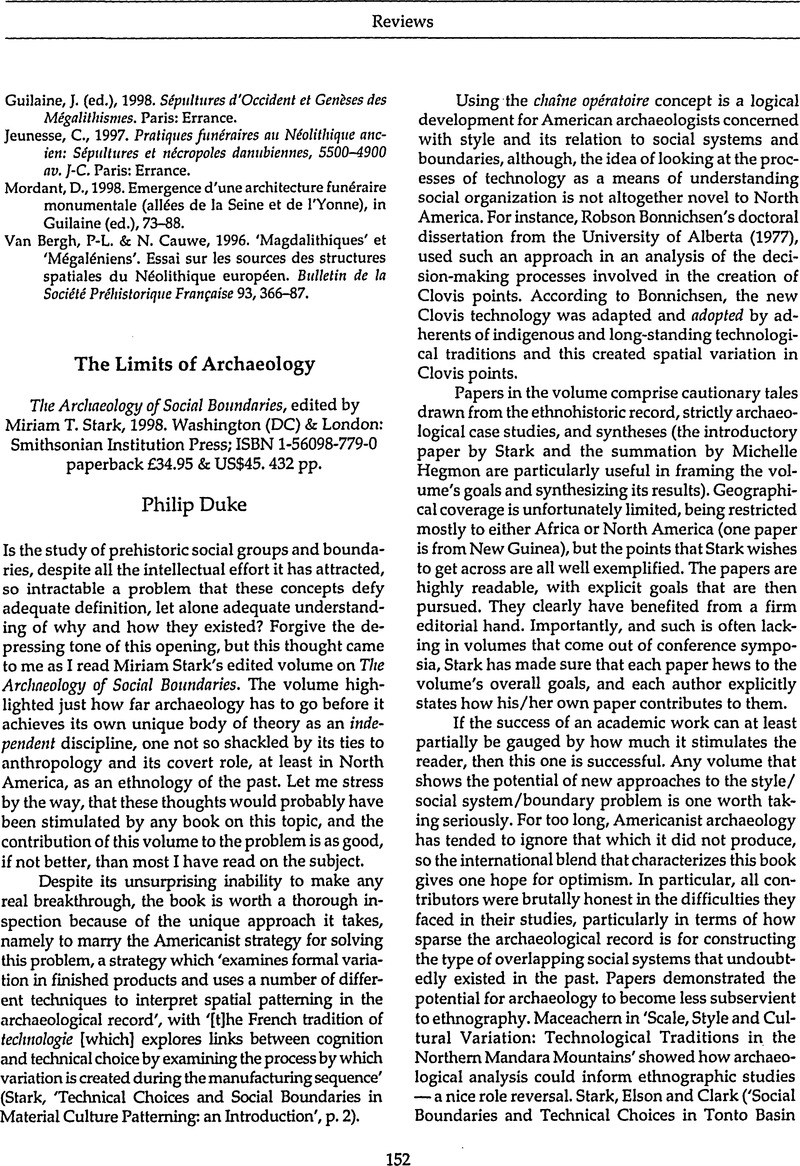No CrossRef data available.
Article contents
The Limits of Archaeology
Published online by Cambridge University Press: 14 October 2009
Abstract
An abstract is not available for this content so a preview has been provided. Please use the Get access link above for information on how to access this content.

- Type
- Review Articles
- Information
- Copyright
- Copyright © The McDonald Institute for Archaeological Research 1999
References
Bonnichsen, R., 1977. Models for Deriving Cultural Information from Stone Tools. (Mercury Series, Archaeological Survey of Canada, paper 60.) Ottawa: National Museum of Man.Google Scholar
Cordell, L.S. & Plog, F., 1979. Escaping the confines of normative thought. American Antiquity 44, 405–29.CrossRefGoogle Scholar
Higgs, E.S. & Jarman, M.R., 1975. Palaeoeconomy, in Palaeoeconomy, ed. Higgs, E.S.. Cambridge: Cambridge University Press, page nos??.Google Scholar
Hodder, I. & Orton, C., 1976. Spatial Analysis in Archaeology. Cambridge: Cambridge University Press.Google Scholar
Jones, S., 1997. The Archaeology of Ethnicity: Constructing Identities in the Past and Present. London: Routledge.Google Scholar
Trigger, B., 1984. Archaeology at the crossroads: what's new? Annual Review of Anthropology 13, 275–300.CrossRefGoogle Scholar




